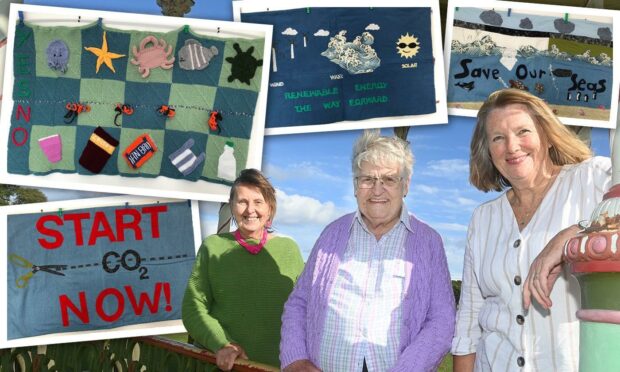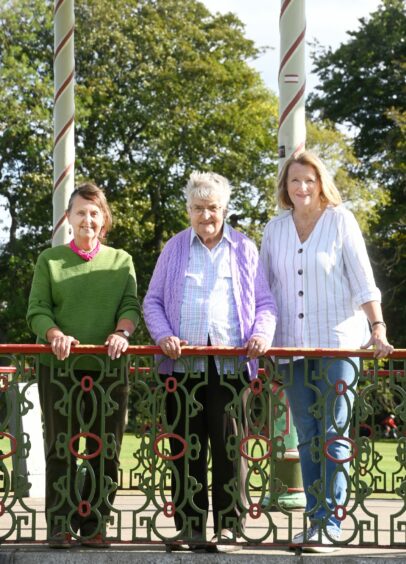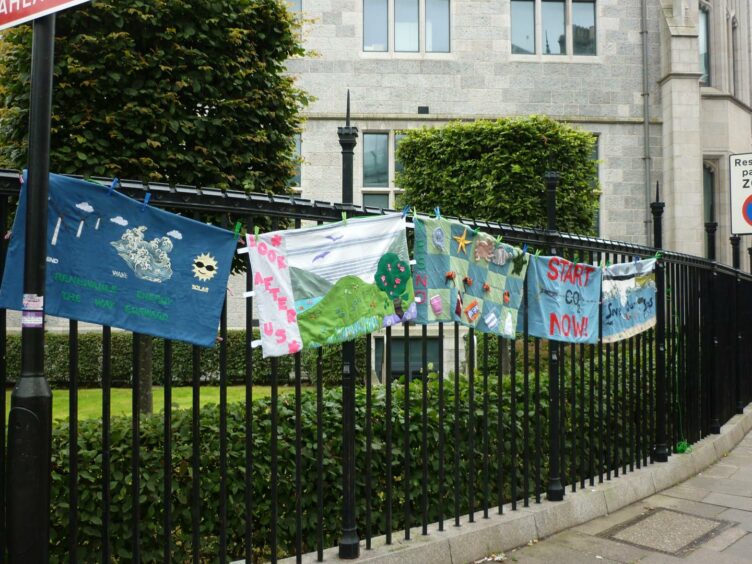A group of local crafters have knitted, crocheted and stitched their way into the history books by creating a variety of creative messages for the participants of the COP26 Climate Conference.
The artistic panels made by the Aberdeen branch of Soroptimist’s International will join together with thousands of other panels made around the UK to be displayed at Glasgow Green in November.
Pat Stewart, Liz Mackie and Audrey Masson are just three of the north-east women involved and say that “mass-craftivism” is an excellent way of putting the future of the planet at the forefront of people’s minds.
‘Craftivism’ in action
The project is part of a campaign called Stitches For Survival which has encouraged crafters around the country to pick up their tools in aid of the climate.
Local quilters like Pat, Liz and Audrey have been quietly working at home during the pandemic producing sections for a banner which – when sewn together – will form a 1.5 mile “scarf” to be displayed at the forthcoming COP26 conference in Glasgow.
The length of the scarf represents the 1.5°C target in the Paris Agreement.
“We are all very passionate about the environment,” said Pat, who has been a member of Soroptimist International Aberdeen for 15 years.
The club is part of a global group which advocates for human rights and gender equality.
Issues surrounding climate change and the environment have been high on the Aberdeen branch’s agenda for some time.
“When we heard about the opportunity to get involved in a project like Stitches For Survival which has the potential to have worldwide impact, we just had to take part,” Pat said.
Crafting renewable energy and ocean plastics
She explains that the brief was intentionally vague so that the crafters could have free reign on their climate designs.
“We all had different ideas which we wanted to show,” she said.
“So we have covered everything from renewable energy and cutting CO2 to biodiversity and ocean plastics.
“Each of the messages is something we know we as a society should be doing and are hoping world leaders will be addressing in November.”
Once all the hundreds of panels are sewn together, the Stitches For Survival scarf will be used for campaigning in the days before COP26.
During the conference, the scarf will be displayed at Glasgow Green Drying Green.
“I can’t even begin to imagine what one and a half miles of this will look like,” Pat said. “But we can’t wait to see the finished outcome.”
After COP26 the scarf will be repurposed into blankets for refugees and other communities who need them.
Some of the more creative sections will be kept for an exhibition, and be used for ongoing campaigning.




